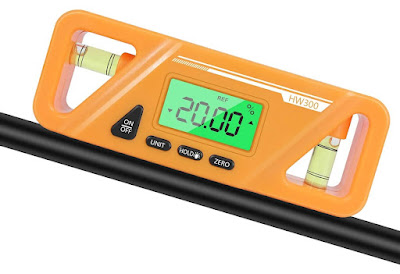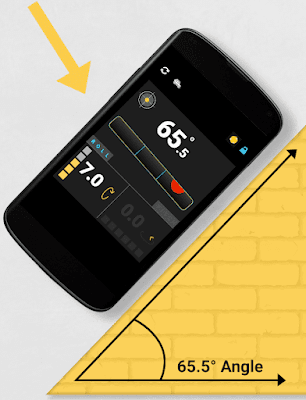Types Of Clinometers, Parts, Measuring and Equation
What Is a Clinometer
Clinometer is a simple and valuable measuring instrument used to determine angles of slope, elevation or depression of an object or surface. In essence, it helps measure tilts and angles and how far something is leaning from the vertical or horizontal plane.
In terms of appearance, a basic clinometer typically consists of a sturdy metal or plastic casing that houses a graduated circular level marked with degree lines. The device usually has a compact tubular or cylindrical shape with sighting scopes. When held horizontally, the bubble in the spirit level confirms a reference 0° vertical angle.
As for the working principle, clinometers make use of basic trigonometry. When sighting the target object, the reading indicated by the gravity pendulum against the graduated markings provides the tilt angle. Using this angle and a suitable distance measurement to that object, simple trigonometric formulas are then applied to calculate object height indirectly. So a clinometer's primary purpose and function is to provide quick angular measurements to determine height and slope for basic surveying needs, scientific study or field observations.
Due to the simple measurement technique, clinometers are a practical tool for approximate angular measurements. They allow reasonable accuracy even during basic preliminary surveys or observational studies done on location.
🔗Applications, Advantages and Disadvantages of Clinometer
Parts Of a Clinometer
Body/Casing
A clinometer's main outer body or casing needs to be sturdy and corrosion-resistant since these instruments are used outdoors. Metal or hard plastic casings are preferred. The body securely houses the inner measurement components and has an eyepiece for sighting. Ergonomic body shapes for easy grip allows stable aiming.
Tubular Sights
Clinicals have tubular sights or small telescopes with crosshairs or markings to allow precise targeting of the object whose angle needs measuring. High-powered optics offer better accuracy. The sights protrude out of the casing on one end for taking readings.
Built-in Spirit Level and Degree Markings
A tubular glass vial partially filled with liquid is mounted inside the case. This spirit level has circular graduations marked for angles. The position of the air bubble inside indicates the tilt angle via the graduated scale.
The concentric circular scales prominently marked in degrees from 0 to 90 allow reading off angle values based on gravity pendulum needle or by bubble position, painted or engraved markings are long-lasting.
Digital Display
Advanced digital clinometers electronically sense angles and display measurements directly in numeric format (degrees and fractions) on small built-in LCD or LED screens for straightforward interpretation.
Measuring With a Clinometer
Measuring Slopes and Angles
The clinometer's primary function is to quantify slopes and angles. The user sights the target surface or object centrally via the eye-piece and views the circular level. The angle value where the bubble lines up indicate the slope or tilt angle.
Determining Height/ Distance
Using clinometer angle readings and distance values measured separately to the object, trigonometric relationships are used to calculate heights indirectly. E.g. Using angles, distances, and trigonometric formulas like tangent ratio.
The line of sight distance to the object is also needed, along with clinometer angles for computing heights by trigonometry. Distance can be measured directly or using other devices like laser rangefinders or GPS systems.
So, clinometers provide simple, portable and reasonably accurate angular data. Back-end distance data and mathematical processing give derived elevation values.
In the above figure, h1 is total height, h2 is height of instrument, h3 is the height is going to be measured by clinometer. θ is the 90 minus the angle measured by the clinometer.
Then, h1 = h2 + distance * tan (θ)
Types Of Clinometers
Here is an expanded explanation of the different types of clinometers:
There are a few basic types of clinometers that serve additional functionality based on their make, mechanism and usage:
Simple or Basic Clinometers
The most basic type is the analogue or straightforward clinometer, as described earlier. It consists of a sturdy body housing a protractor. Readings are taken manually by sighting the target and reading the hanging needle (like a pendulum) against the graduated scale. These are easy to use and sufficiently accurate for rough measurements.
Spirit level clinometer
In this type of clinometer, a spirit level is used to measure the angle of tilt. The position of the air bubble inside indicates the tilt angle via the graduated scale.
Digital Clinometers
Digital clinometers take angle measurements to the next level and display readings directly in digital numeric format on a small screen. This allows for quick interpretation of slope or tilt data without estimation errors. They work using gravity sensor gauges, providing improved speed and consistency compared to sighting and visually reading a manual clinometer.
Smartphone Clinometer Apps
Recently, smartphone clinometer apps that utilize built-in accelerometers and gyroscope sensors have become very popular. These function similarly to basic digital clinometers but leverage the computing power of smart devices. Tilt data can be instantly displayed on the screen and logged more efficiently. Some apps even integrate with mapping software for advanced functionality. Of course, reliability varies across smartphone brands and models.
Advanced Optical Clinometers
High-end surveying grade optical clinometers used for civil engineering and geoscience applications take precise automatic angular measurements using specialized calibration and amplified optics. These are mounted on a tripod and deliver very accurate inclination data, removing parallax errors and minimal manual handling for superior consistency of readings. They can be used with laser rangefinders and GPS equipment for advanced survey needs.
The choice between basic types of clinometers depends on the degree of accuracy needed and the kind of field conditions they will be used in. Each has its purpose-fit advantages for specific applications.
Other classifications of clinometers include vernier clinometer and micrometre clinometer.








